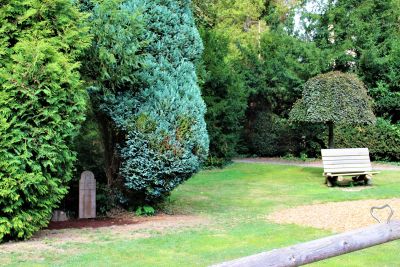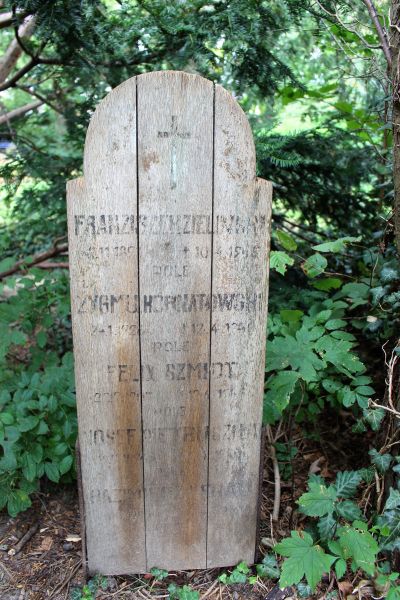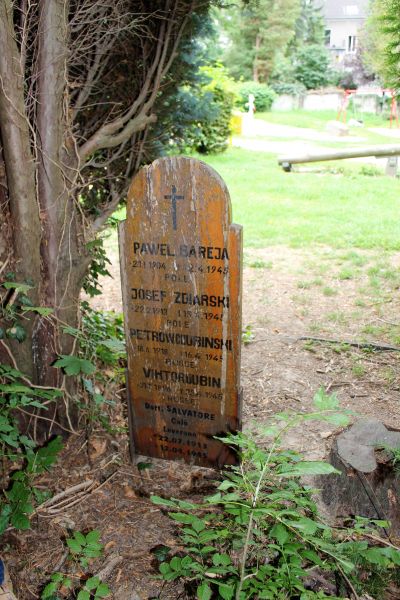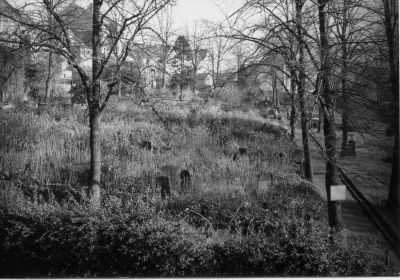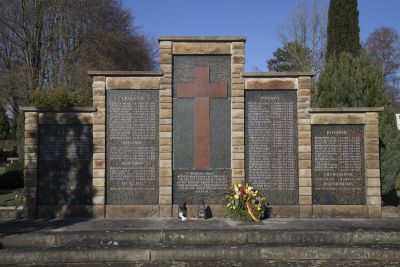THE TEN FORGOTTEN FACES IN THE PARK
The forced labour sites in Wetter/Ruhr as places of remembrance
In the period between 1939 and 1945, there were numerous camps for prisoners of war and forced labourers in Wetter, even some for women, families and children. Wetter companies registered a high demand for foreign workers for their industries, as did the town of Wetter. The working and living conditions of those interned were controlled, restricted and inhuman. The way they were paid and fed was based on a racist hierarchy: “Eastern workers” received the lowest wage and the least food.[16] Between 25 April 1942 and 29 June 1945, more than 75 forced internees died in Wetter.[17] Since then, the municipal archive has established that there were further deaths of people who were not directly registered in the register of deaths and whose fate was not established until after the war had ended. The last entry of a deceased prisoners of war was made in May 1966.[18] The many young people from abroad, who lost their lives in Wetter in 1939 and 1945 in the face of totalitarian conditions, had an identity without a future. Historically and ethically, the town has an obligation to commemorate this period when injustices were suffered and tyranny endured and to enshrine this in its civic work on culture and education. Some of the companies in which the many workers from abroad slaved away still exist today. Some of the camps in which they whiled away their meagre free time have had new homes built over them. The streets still exist but today there is nothing there to show that these were the places were injustice occurred and tyranny was endured. Only the isolated town cemeteries show signs of a topography of past terror which are visible to the public but which are often unfamiliar to future generations. Historical remembrance also has an increasingly important role to play in good generational ageing, how and what people remember and their own self-awareness in the process.[19]
In September 2019, with the aim of commemorating the specific circumstances of forced labour in Wetter and to bring it into the public arena, the author brought a proposal to the city council stating that the care of grave sites from war and violence should not be neglected, the dead (where possible) should be given back their names comparable to other war dead, and information boards showing the historical background should be erected at the grave sites; likewise, wherever there had been camps and places for prisoners of war and forced labourers, signs with historical references should be attached as a memorial to the fate of these multiethnic, workers in the industrial town.
According to the council decision of 22 October 2019, during an on-site visit with the LWL-Denkmalpflege, Landschafts- und Baukultur in Westfalen and at the “Memorial to the forced labourers; Old Cemetery in Bornstraße”, the “heritage value within the meaning of the heritage protection law was recognised”. On 12 December 2019, the town council unanimously agreed to the author’s proposals and decided the following: “1. Management is tasked with finding multiple suitable sites in the city area in which reference can be made to the history of the forced labour camps. 2. Management is requested to make contact with the Polish Consulate again and to convey the request of the Wetter (Ruhr) town council for permission for a dignified reworking of the headstones in the Bornstraße cemetery”.
As of October 2021, the decisions have not be implemented. What is more, in the summer of the same year, the wooden headstone of the ten deceased men under the conifers disappeared, which has now been located by the author in municipal facilities.
A continuation of the remembrance work in Wetter will follow.
Thea Struchtemeier, October 2021
[16] Fritzsche, Jörg: Zwangsarbeit in Hagen während des Zweiten Weltkriegs, Marburg 2005, p. 62–68.
[17] Thier (1996), p. 217.
[18] Draft resolution of the town of Wetter dated 14/11/2019.
[19] The journalist and author Sabine Bode interviewed a number of war children and grandchildren, who had been traumatised by their parents and grandparents not wanting to remember or not being able to remember; see also: Gutes Altern durch Erinnern see the project by Stefan Berger https://news.rub.de/studium/2021-07-30-unic-citylab-gutes-altern-durch-…; (last accessed on 11/10/2021).
